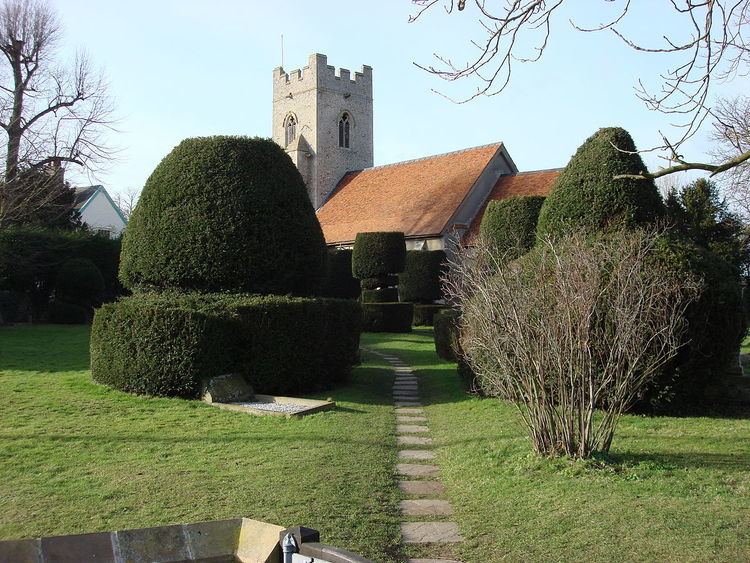Phone +44 1787 277850 | ||
 | ||
The ghosts and hauntings of borley church
Borley Church is the parish church in Borley, Essex. Like the former Borley Rectory it is said to be haunted. The church is notable also for its topiary walk and a large monument covering the graves of Sir Edward Waldegrave (a member of Mary I of England's privy council) and his wife.
Contents
- The ghosts and hauntings of borley church
- Borley church essex
- Description and history
- Claims of haunting
- References
Borley church essex
Description and history
The church (dedication unknown) is a small building of stone; the nave may date to the 11th century. Later renovations have resulted in the mainly perpendicular style of the mid-14th to 16th centuries, still visible in the chancel and the western tower. The church as it now stands consists of chancel, nave, south porch and a crenellated western tower containing bells, with a topiary walk leading to the porch. It is designated by English Heritage as a Grade I listed building. Grade I is the highest of the three grades of listing, granted to buildings that "are of exceptional interest, sometimes considered to be internationally important".
Not long after 1545 the manor was granted to Sir Edward Waldegrave (knighted in 1553 at the coronation of Queen Mary, died in the Tower of London on 1 September 1561) by Henry VIII. After the death of Edward, he was admitted to Queen Mary's privy council and granted the manor of Navestock, where he moved the family seat. In addition Waldegrave was Master of the Wardrobe for Queen Mary and her husband, Philip II of Spain.
The chancel contains a monument to John Durham of Norfolk. Several tombs of the Waldegrave family are found within the structure, including a monument 14 feet high, 9 feet long, and 5 feet wide, with a cornice supported by six pillars of the Corinthian order, beneath which lie full-length marble figures of Sir Edward Waldegrave and his wife Lady Frances Waldegrave née Neville (died 1599). Both tombs bear a marginal inscription in Latin and a record of other alliances of this family. On the chancel's north wall is a devotional statue of Magdala Southcote, Walgrave's daughter, who died 8 September 1598 (Nikolaus Pevsner notes it, but calls it "not good"). The church contains memorials to two 19th-century rectors, John Philip Herringham and his son William Herringham. John Philip was a Pembroke graduate and one of the signees of a declaration protesting the Maynooth Grant in 1845; William entered Peterhouse, Cambridge.
The glebe was 10 acres (4.0 ha) in the mid-19th century; in both 1821 and 1831 the parish had 195 inhabitants.
Claims of haunting
The church is claimed to be haunted although with much less activity than the former Borley Rectory. Alleged paranormal activity includes "phantom organ music, ghostly chanting, and the ghost of a nun moving about the churchyard". Ghost stories from the church and the rectory are frequently connected to a supposed Benedictine monastery in the area; paranormal investigator Ed Warren claims to have accidentally taken a picture of the ghost of a monk, leafing though a book in the church.
